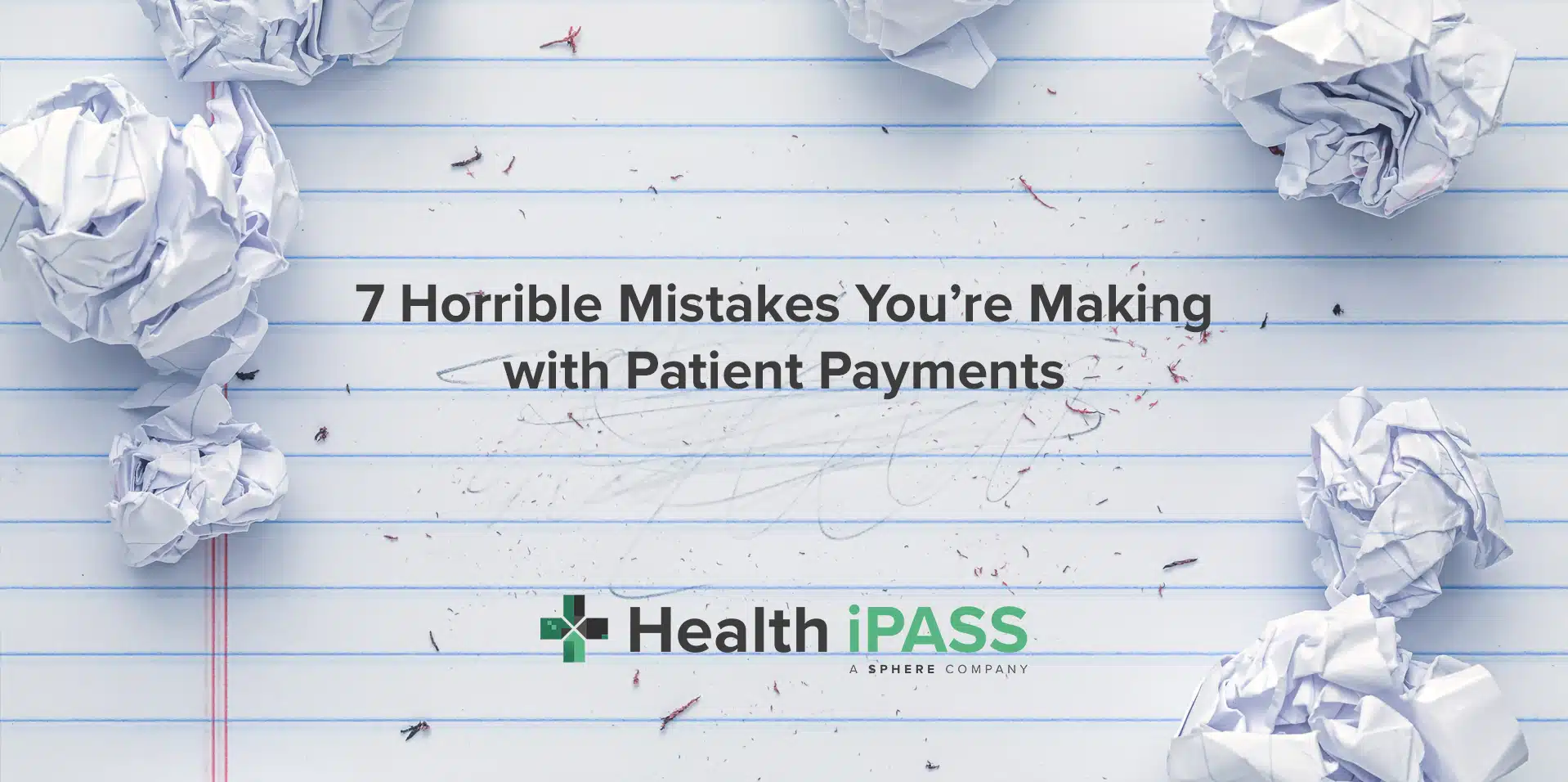In today’s world of fast-paced (and often understaffed) medical offices, it’s easy to experience errors. However, if processes are not optimized and workflows are inefficient, revenue collection opportunities could be missed and the patient experience could suffer. Is your practice making these common mistakes?
Mistake 1: Inaccurate patient data
Outdated insurance coverage or the wrong mailing address can delay collections and cause lost revenue. What’s the best practice? Asking every incoming patient if their information has changed at each visit. Train staff to proactively collect information and hold front office employees accountable. Pre-screeners, digital patient intake forms and express check-in capabilities can help ease the manual burden placed on staff and expedite information collection at the same time.
Mistake 2: A lack of financial transparency
Informed patients are happier patients. Imagine that a patient receives an estimate of their financial responsibility, but then a bill arrives weeks later with a wildly different number. Or perhaps they do not receive an estimate at all! While predicting exact dollar amounts may have know their costs upfront are more likely to pay. The bottom line is that an inaccurate estimate can lead to a poor patient experience and hinder motivation to pay for services rendered. Provide on-demand, clear cost estimates for services at, or before, the time of service for best results. Cost estimation tools can make the task easy, even providing printed or emailed estimates determined by the patient’s insurance, service type & provider, and your clinic’s custom billing codes.
Mistake 3: Not collecting upfront
We all know that the likelihood to collect accurate payment – or to gain any payment at all! – significantly decrease once a patient leaves the office. Ensure your staff is proactively taking steps to secure payment during the office visit. Educating patients on their payment options as early as possible (maybe that’s a payment plan for self-pay patients, for example) or trying to secure a credit card to keep on file is also a good idea.
Mistake 4: Taking your time
How long do claims sit unattended at your practice? Rushing can have its consequences, but that’s not to say you should take the leisurely approach and delay claim submissions. Letting claims sit for too long can have dire consequences. Sure, every practice gets busy and backed up, but submitting claims in a timely manner should be a priority. It’s said that statements sent within a week of service have the highest likelihood to get paid quickly. The top course of action is to submit claims on the day of service for the most timely results.
Mistake 5: Sending paper statements
If you’re office is relying heavily on paper statements sent via snail mail, it needs to reassess its collection methods. Not only is this manual process taking up valuable staff time, it is simply not as efficient as more digital advanced methods. Sure, there will always be patients that desire or require a paper bill, but that should not be the norm. 80% of patients prefer getting statements electronically via text or email. Modern options like text-to-pay and email-to-pay streamline collections by delivering a clear, simple, and secure payment experience.
Mistake 6: Not utilizing multiple payment methods
Allowing patients to pay anywhere at any time has its benefits. If your practice does not offer an online portal for fast, easy collections, it could be missing out on lucrative payments. Today’s payment portals are straightforward and convenient, plus provide a positive experience for patients with features like real-time updated balances and digital receipts. Make sure your practice incorporates this option for optimal collections. Even better, highlight time-saving capabilities like saving card information on file to make the process more efficient.
Mistake 7: Communication competencies
Provider-patient relationships don’t stop when an appointment ends. A well-run medical practice keeps communication going through follow up calls, appointment reminders and multiple payment touch points. If your practice goes silent, so to speak, it could be losing out on valuable revenue-generating opportunities. Keep patients updated on their coverage, outstanding balances, policy changes and more to ensure repeat visits.
If your practice needs help working through common office issues, contact Health iPASS today. Get started at healthipass.com.






